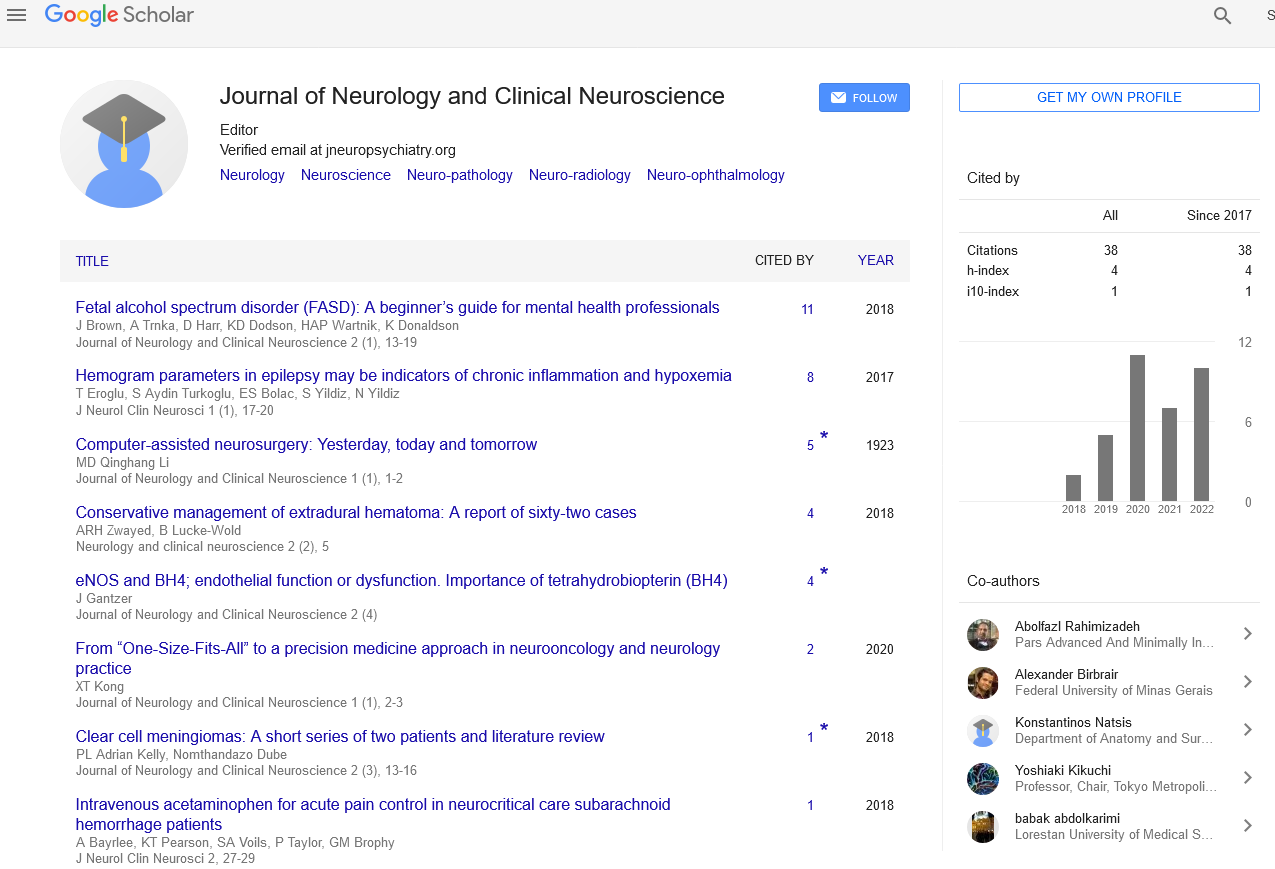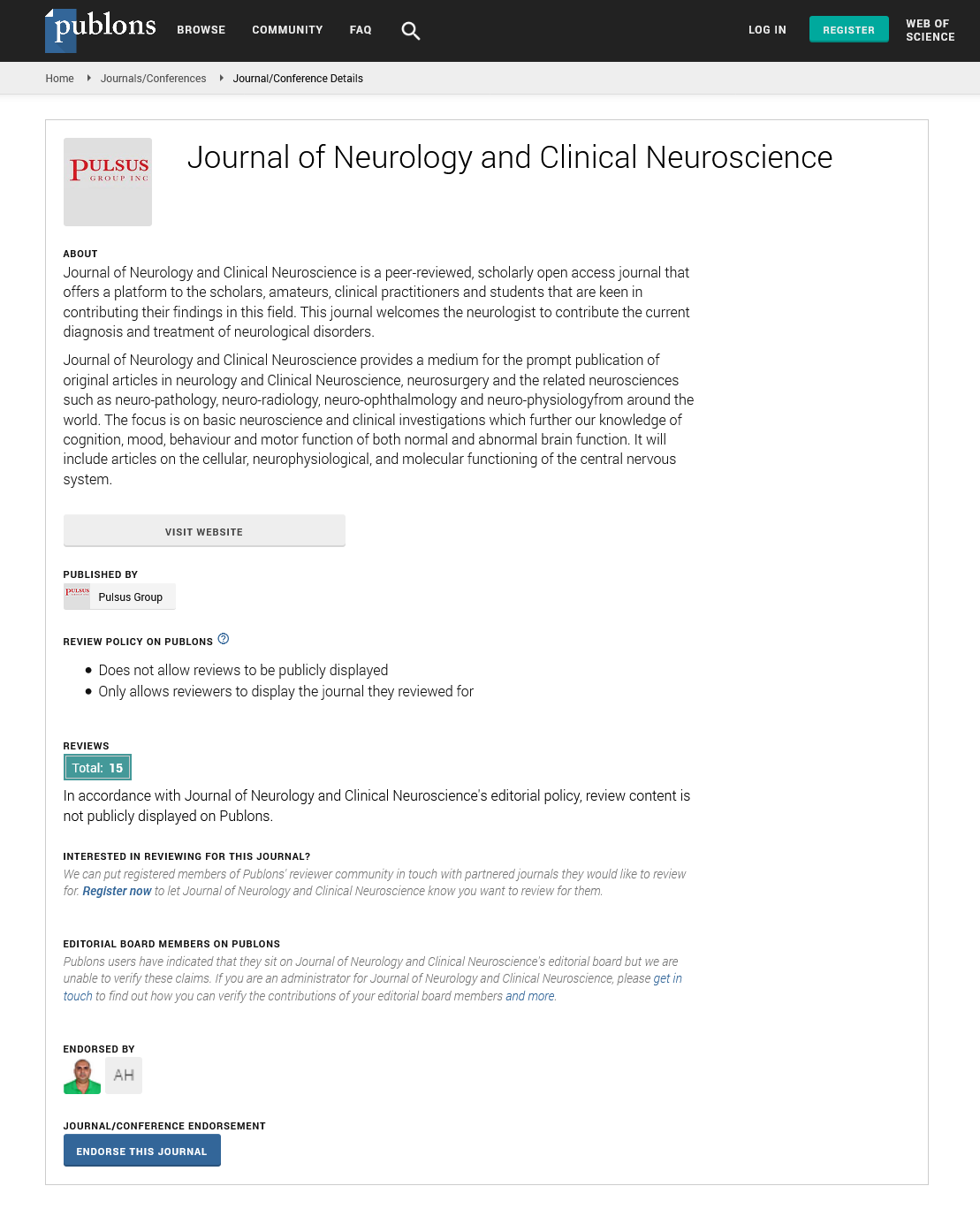Beyond the chemotherapy for brain tumor treatment in neuro-oncology practice
Received: 21-Aug-2018 Accepted Date: Aug 23, 2018; Published: 27-Aug-2018
Citation: Kong XT. Beyond the chemotherapy for brain tumor in neuro-oncology practice . J Neurol Clin Neurosci. Oct 2018;2(3):7.
This open-access article is distributed under the terms of the Creative Commons Attribution Non-Commercial License (CC BY-NC) (http://creativecommons.org/licenses/by-nc/4.0/), which permits reuse, distribution and reproduction of the article, provided that the original work is properly cited and the reuse is restricted to noncommercial purposes. For commercial reuse, contact reprints@pulsus.com
Are Neurologists Ready for See the Patients wearing Optune Electric Cap?
Glioblastoma (GBM) is the most malignant brain tumor in adults. Since 2005, newly diagnosed GBM has been treated with surgery, radiation and adjuvant chemotherapy with temozolomide [1]. The standard therapy applied by neuro-oncologists for GBM patients is to provide the chemotherapy agent called temozolomide, to manage seizures and other complications from treatment and disease. With the above aggressive treatment, newly diagnosed GBM has only had a limited median overall survival time of 14.6 months. In 2011, the FDA approved the tumortreating fields (TTFields) device, Optune (also called Novo TTF) for recurrent GBM [2]) after the study showed a non-inferior effect of Optune to “best standard chemotherapy” chosen by doctors. Optune is a portable, battery-operated device that generates electric fields and is worn by the patients on their head like a cap for the treatment of supratentorial brain tumor. Some patients call it an “Electric Cap.” The mechanism is to produce alternating electric fields to interfere with highly charged macromolecules and organelles in rapidly dividing cancer cells to disrupt their neat alignment during the phase of mitosis.
In 2015, FDA approved Optune for newly diagnosed GBM after an EF-14 clinical trial found a positive outcome for patients with brain cancer [3]. In 2017, Optune became part of the NCCN guidelines in the treatment of newly diagnosed GBM [NCCN Guidelines®] [4]. The trial randomized 695 patients with a 2:1 ratio of Optune arm (446) to control arm (229). Both arms were treated with concurrent chemotherapy and radiation therapy followed by adjuvant chemotherapy. Then the trial arm wore the device Optune on head ans received adjuvant chemotherapy while the control group only received adjuvant chemotherapy. With the addition of Optune to chemotherapy for newly diagnosed malignant GBM, the overall survival time increased to more than 20 months [2]. Of particular note, the five-year survival rate increased from approximately 5 % to 10% [5]. Because of the EF-14 study, an increasing number of neuro-oncologists have started prescribing Optune for the treatment of GBM in addition to standard chemotherapy.
More GBM patients may be seen wearing this device on their heads and visiting neurologists of various subspecialties. First, the patient wearing Optune may present to neurologists with a variety of neurological issues just like patients without brain tumors. Second, the patients wearing Optune may have complications from the tumor itself and treatment related complications such as seizure, headache, nausea, vomiting, focal or generalized weakness, fatigue, or stroke, for which they search for general neurology care because there may be no neuro-oncology service in their local area. Third, the patients may develop adverse effects from Optune.
The adverse effects of Optune are less compared to systemic chemotherapy. The major side effect is focal scalp irritation. Other uncommon side effects including headache, seizure, anxiety, depression, fatigue and insomnia, which might or might not be related to Optune since the trial found no statistical difference between the Optune trial group and the control group [2]. Health related quality of life is maintained [6]. For scalp irritation, the treatments include application of local steroid lotion or cream, and antibiotics ointment if needed. Patients are also allowed to wear Optune when they undergo a CT head study though are not allowed to wear it during a brain MRI study.
As neurologists, we need to be familiar with the concepts of the Optune treatment, the device itself and how to manage the potential side effects of the device when patients wearing Optune “Electric Cap” come to see us for management of their neurological issues.
REFERENCES
- Stupp R, Wong ET, Kanner AA, et al. NovoTTF-100A versus physician's choice chemotherapy in recurrent glioblastoma: a randomised phase III trial of a novel treatment modality. Eur J Cancer 2012; 48: 2192–2202.
- Stupp R. Effect of tumor-treating fields plus maintenance temozolomide vs maintenanc temozolomide alone on survival in patients with glioblastoma: A randomized clinical trial. JAMA. 2017;318:2306-16.
- Stupp R, Taillibert S, Kanner AA. Maintenance therapy with tumor-treating fields plus temozolomide vs temozolomide alone for glioblastoma: a randomized clinical trial. JAMA. 2015;314:2535-2543.
- NCCN Clincal practice guidelines in oncology (NCCN Guidelines®), Central Nervous System Cancers.
- Ram Z, Kim CY, Nicholas GA, et al. ACTR-27. Compliance and treatment duration predict survival in a phase 3 EF-14 trial of Tumor Treating Fields with temozolomide in patients with newly diagnosed glioblastoma. Neuro Oncol. 2017;19:vi6-vi7.
- Taphoorn MJB. Influence of treatment with tumor-treating fields on health-related quality of life of patients with newly diagnosed glioblastoma: A secondary analysis of a randomized clinical trial. JAMA. Assoc Oncol. 2018;4:495-504.





